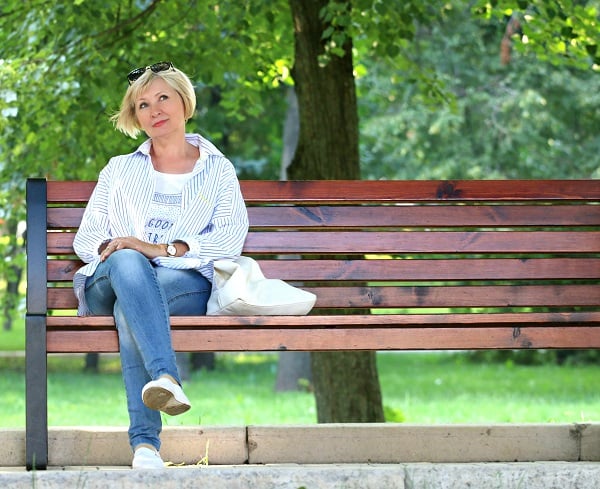Published on
Transformation and Access: The Past, Present and Future of Continuing and Professional Education

Continuing and professional education divisions were originally established to serve a small subset of learners who had different characteristics and expectations than the traditional student. These so-called “non-traditional” students, however, are now the majority in the postsecondary environment and their numbers are growing. So how does this shift impact the role of CPE, and where do these divisions go now to continue to serve as innovative hubs? In this interview, Kathleen Burke, who has spent much of her career in the CPE environment, reflects on how the role of CPE has evolved and shares her thoughts on how these divisions will continue to transform in future.
The EvoLLLutiom (Evo): How has the role of continuing and professional education (CPE) divisions evolved over time?
Kathleen Burke (KB): Continuing and professional education (CPE) has a proud history in American higher education, and I am more than pleased to have been a part of it. I began my career teaching composition and literature at the University of Maryland in the late 1970s and 1980s. My first students were traditional undergraduate students, but I also started teaching non-traditional students through University of Maryland University College (UMUC) around the same time. UMUC had been the “evening division” of the then-larger state flagship, and it was one of the few providers of undergraduate and graduate education for non-traditional students at the time. From its early days answering the military’s call to accommodate soldiers under the Montgomery GI Bill, by the 1980s, UMUC had become its own institution focusing on undergraduate and graduate degrees for adult learners.
CPE units, in those days, had largely devolved at state-run institutions from the “extension” and “public service” missions of the large, state-run flagships. Often, the curriculum was designed to meet the needs of the agricultural communities that these institutions served, including needs related to community enrichment and training. Sometimes, what was taught included non-credit and enrichment classes as well as undergraduate and graduate offerings. In some cases and in some places, the non-credit and enrichment needs dominated, and they continue to this day to be a sizeable part of some CPE portfolios. On the credit-bearing side, when I began teaching in the late 1970s, many of these extension schools had already realized the broader adult education mission and were offering a variety of programs designed, in those days, for undergraduate degree completion. While I personally missed the “sunrise semesters” of the 1960s, I taught in the early days of “disruptive innovation,” utilizing technologies and alternative delivery strategies and methods to meet students where they were. These methods included regional sites—some quite distributed around sizeable states—as well as video classes (closed circuit and satellite) connecting various locations. By the late 1980s, pre-LMS online classes were also being offered, often on UNIX-based, linear “black and green” computer screens, with textbooks shipped to students around the country and office hours held by phone. Of course, this latter use of computers in higher education has continued and accelerated apace, and today’s sophisticated use of technology allows for rich, mobile online learning environments.
To some extent, the now-thriving CPE units we see today were born of those early days, when traditional institutions felt both an obligation and an inability to serve non-traditional learners. In many ways, it was easier to cordon off adult-serving units and to develop specialized expertise in working with non-traditional learners that could be contained within dedicated CPE units. It was easier to do that than to integrate these units into the mainstream. This worked for a decade or so, until the mainstream began to change and technology use became more pronounced across higher education. Fast forward to the turn of the century and the fast-growing non-traditional majority on mainstream campuses. By some accounts, non-traditional learners constitute as much as 75 percent of today’s higher education population.
The impact of non-traditional learning on the academy has probably not yet been fully measured. What is apparent, though, is that the innovation required to serve adult students has improved the way we teach all students.
Evo: What about their impact on students? How has the way CPE divisions approach and serve students evolved over the course of your career?
KB: Continuing and professional education units have led the way in opening the doors to higher education for many people in the United States and abroad. In one sense, our work has been a series of problem solving tasks, solving problems such as: How do you serve students who cannot come to a campus? How do you leverage technology in doing this? How do you develop viable financial models for students whose eligibility for federal and private loans may be limited at worst and different at best? Academically, how do you re-acquaint itinerant and older learners with newer ways to learn? How do you refresh habits of mind for learning that may not have been recently exercised? The list goes on and on.
Evo: Looking to the future, what are a few key changes you feel higher education institutions (including their CPE divisions) need to make in order to adapt to key shifts in the postsecondary space?
KB: Continuing and professional education units are in the midst of evolving at present, and that evolution will be critical to their future success. Mainstream higher education is becoming more like us, with both good and bad effects. Some institutions are losing their CPE units as the more traditional parts of universities embrace what CPE does by embedding once freestanding units in traditional departments. My own institution, Johns Hopkins, has done this on a large scale with many of our schools now overseeing their own CPE units. Technologically speaking, the evolution has been incredibly positive, with nearly all institutions of higher education now embracing some form of online learning for all students. This has allowed students more flexibility and more independence in charting a path to deep learning, and it is changing the relationship between and among students, faculty and institutions.
One of the most exciting possibilities for the future lies in understanding these relationships and the ways in which they can productively grow using technology and the CPE models for adult engagement. True learning communities are more viable now than they ever have been. For example, the collaboration that defines successful research, particularly in the sciences, can now be taught and experienced in real time with undergraduates, graduate students and working professionals being active participants in discovery. Similarly, humanities research and artistic production can all benefit from the connectedness of contemporary learning. Interdisciplinary work among faculty now is easier than ever before, which may mean that we become better at solving the most difficult problems of our age, including those that—if they remain unsolved—will do us in.
I would like to think that a team of undergraduates, graduate students, diverse, distributed faculty, alumni, and working professionals—utilizing a CPE model of continuous improvement and open learning—might one day cure cancer, find solutions for climate change, and teach us how to live equitably together. To the extent that CPE leaders continue to drive such collaboration and aspiration, they will remain true to their mission of “opening” the university, regardless of where they themselves are housed.
Author Perspective: Administrator



